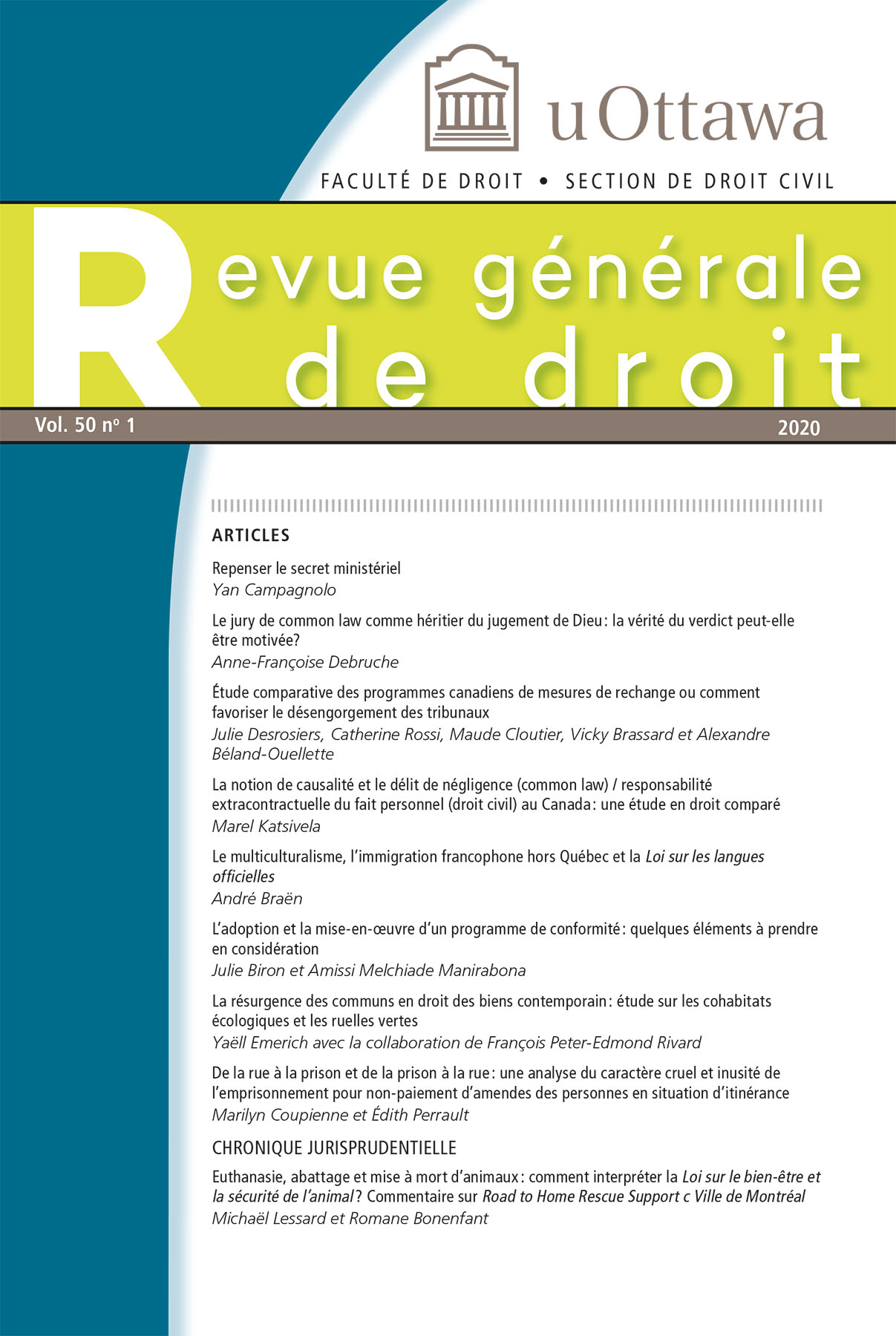Abstracts
Résumé
Les enjeux environnementaux dans le contexte du logement mettent en exergue une résurgence des communs en droit des biens contemporain. Si les (biens) communs sont parfois assimilés aux choses communes et sont, en ce sens, en dehors du champ de l’appropriable — ce que la terminologie anglo-saxonne des communs/commons souligne en évitant le terme property — ils peuvent également renvoyer à des biens appropriables de façon commune ou collective, que cette collectivité soit de droit privé ou de droit public. À partir d’exemples choisis, à savoir une étude des cohabitats écologiques et des ruelles vertes, le présent article met en évidence une résurgence du collectif et des communs, tant dans l’espace privé que dans l’espace public, gommant ainsi l’opposition traditionnelle entre public et privé. Plus particulièrement, on assiste à un renouveau des droits d’usage collectifs grâce aux communs, ainsi qu’à une transformation de la propriété vers ce que l’on pourrait dénommer une propriété polyfonctionnelle, qui comporte une dimension collective en plus d’avoir une dimension individuelle. Le fait que la propriété privée a largement été pensée à travers le prisme de l’individualisme ne peut masquer la fonction sociale de la propriété et ses origines plus collectives. En outre, aux côtés de l’accès à la propriété, la question de l’accès au logement, grâce à des droits d’usage ou de détention collectifs, devient fondamentale.
Mots-clés :
- Communs,
- logement,
- environnement,
- cohabitats,
- ruelles vertes,
- propriété polyfonctionnelle
Abstract
Environmental issues in the context of housing reveal a resurgence of the commons in contemporary property law. If the commons are sometimes identified with common things and are in this sense outside the field of the appropriable—which the Anglo-Saxon terminology of ‘commons’ emphasizes by avoiding the term property—they can also refer to property that can be appropriated in a common or collective way, whether this community operates under private or public law. Using selected examples, namely a study of ecological cohousing and green alleyways, this paper reveals a resurgence of the collective and the commons, both in private and public space, thus erasing the traditional opposition between the public and the private. More specifically, we are witnessing a renewal of collective usage rights through the commons as well as a transformation of ownership towards what could be called polyfunctional ownership that has a collective as well as an individual dimension. The fact that private property has largely been thought of through the prism of individualism cannot mask the social function of property and its more collective origins. Moreover, alongside access to ownership, the question of access to housing, through collective rights of use or holding, becomes fundamental.
Keywords:
- Commons,
- housing,
- environment,
- cohousing,
- green alleyways,
- polyfunctional ownership
